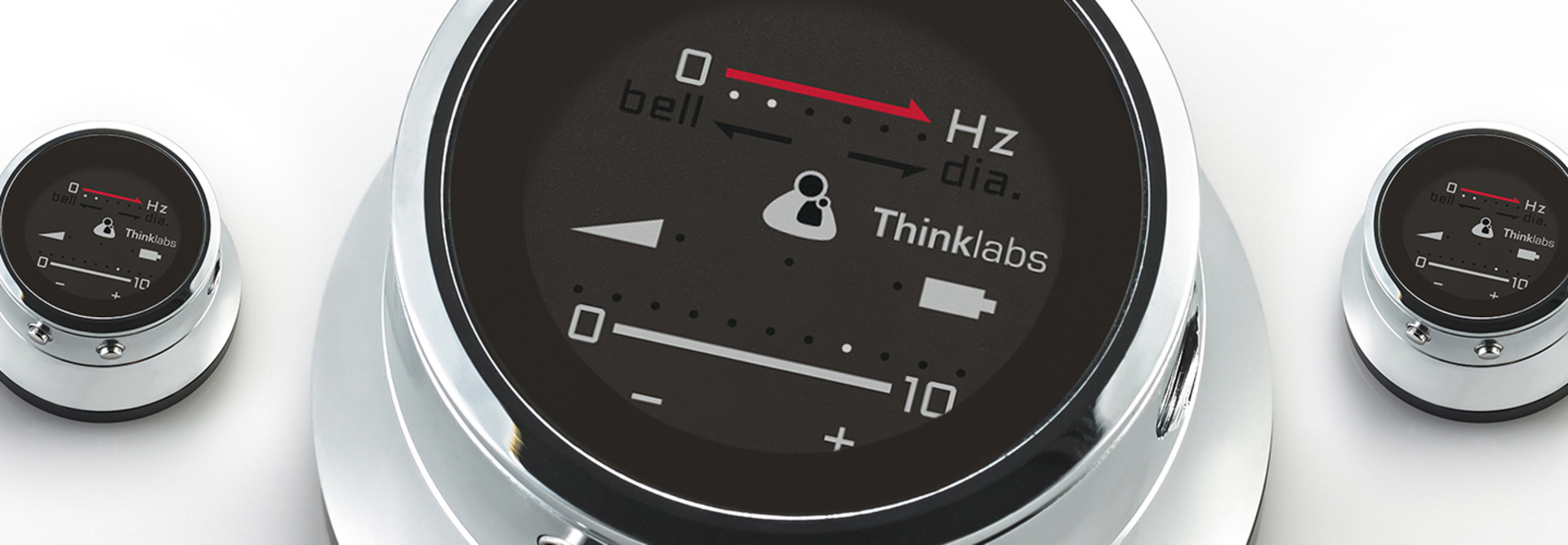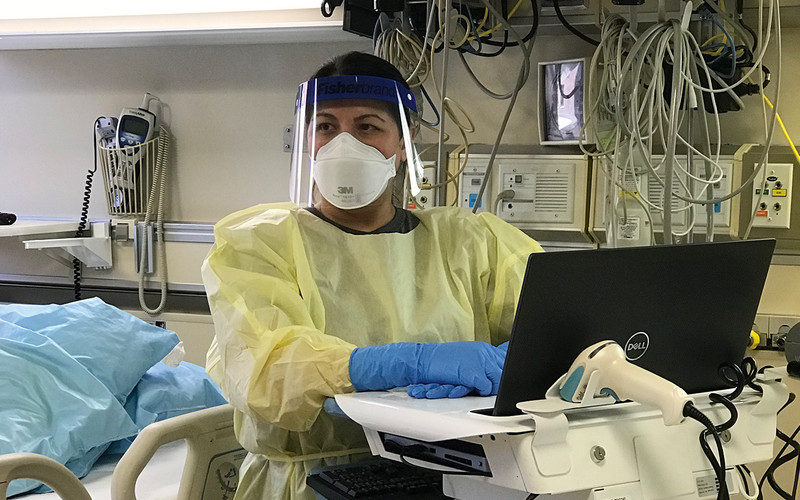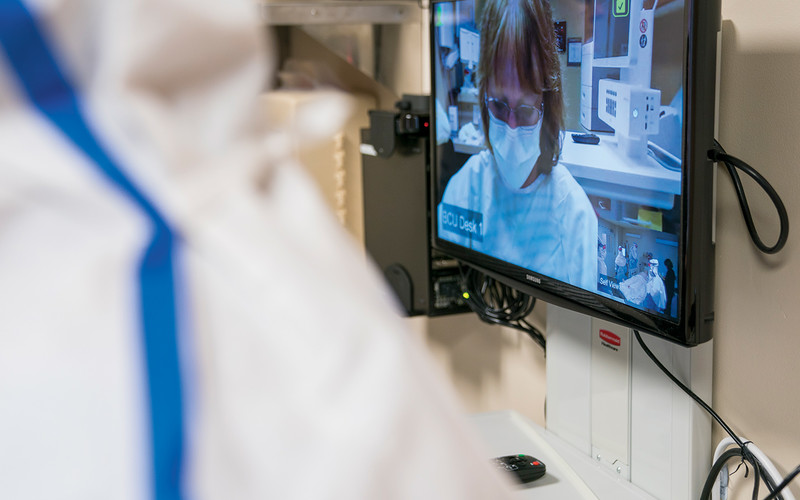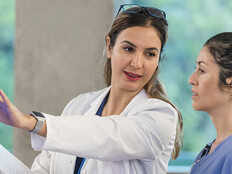“I have avoided using traditional stethoscopes with COVID patients because no matter how hard you try to clean them, there’s the lingering fear that you might be the one transmitting their COVID to a non-COVID patient,” says Dr. Shanon T. Peter, a hospitalist at the VA Greater Los Angeles Healthcare System.
Moreover, the smart tools deliver high-quality sound with adjustable volume. Audio can be archived in a patient’s health record or sent to another clinician for a second opinion.
‘Extremely Valuable’ Tool in High-Risk Settings
The protective benefits of digital stethoscopes became more evident in 2014 during the Ebola crisis, when the tools were sent to medical teams in Africa, says Clive Smith, CEO of Thinklabs Medical, a manufacturer of the technology.
As the palm-size stethoscope rests on a patient, it transmits sound to a smartphone, computer or loudspeaker using a USB cord or an optional Bluetooth transmitter. The stethoscope can connect to telemedicine or videoconferencing platforms, and an accompanying Thinklabs app may be used to generate waveforms for a visual aid.
Digital stethoscopes were critical in caring for U.S. citizens with the Ebola virus who were evacuated from Africa to Nebraska Medicine. The Omaha, Neb.-based healthcare system operates a 10-bed biocontainment unit and a 20-bed quarantine unit, the only federal quarantine unit in the country.
“They’re extremely valuable and a great way to prevent having to send people into the room of a patient who has a highly hazardous infectious disease,” says Kate Boulter, nurse manager of the biocontainment unit, which uses the Thinklabs One digital stethoscope and other models.
Staff already in a high-risk patient’s room may place a digital stethoscope on that individual, Boulter notes, and an interdisciplinary team located elsewhere can receive the sounds and assist with clinical decisions.
















